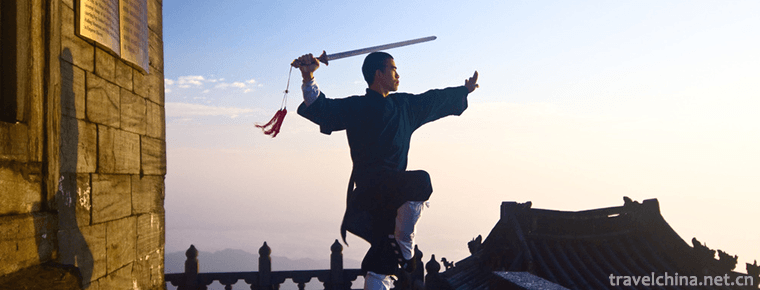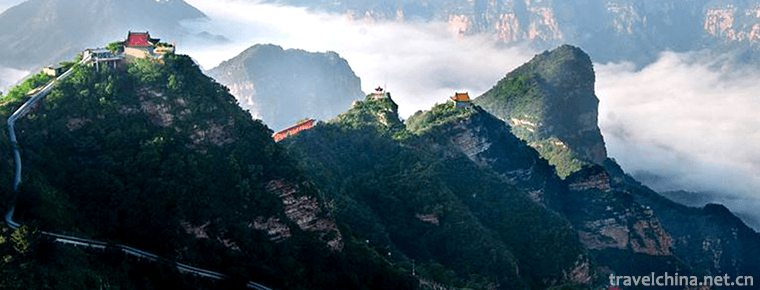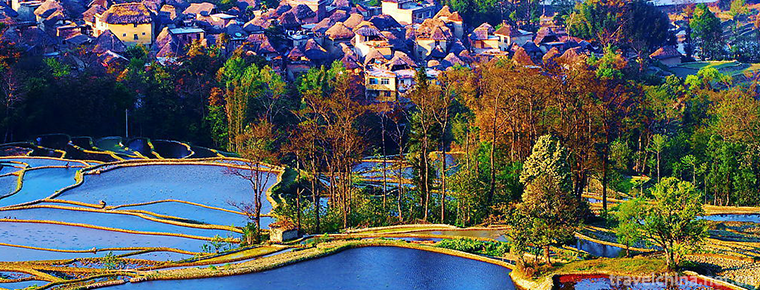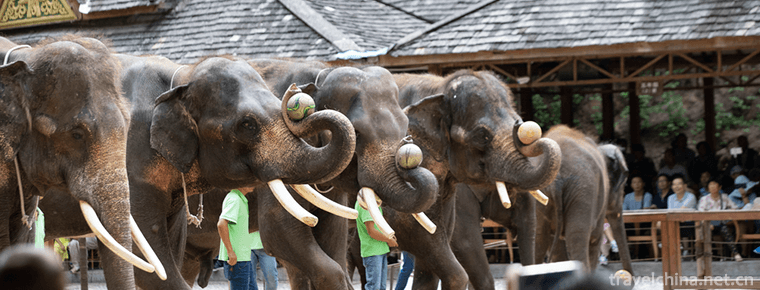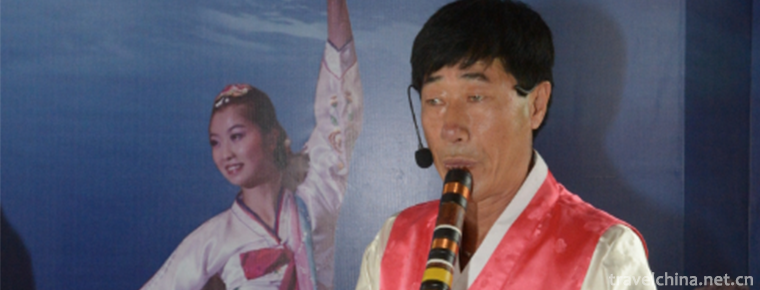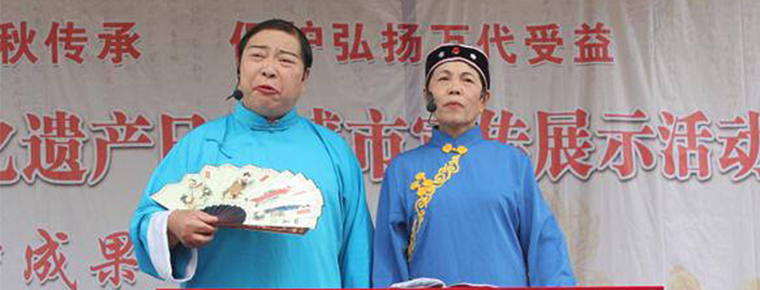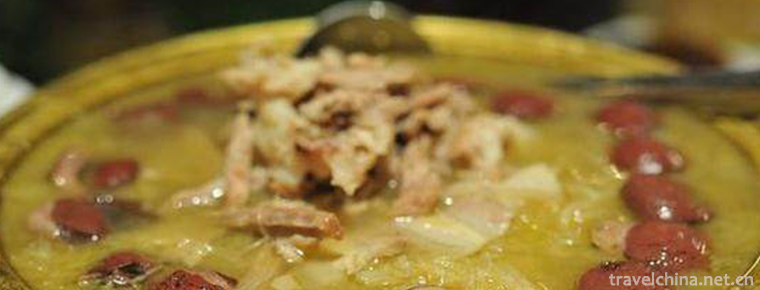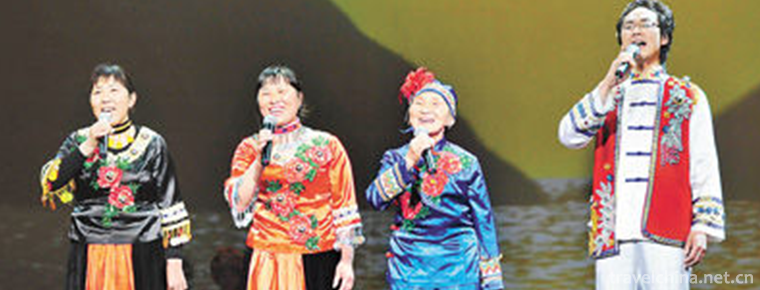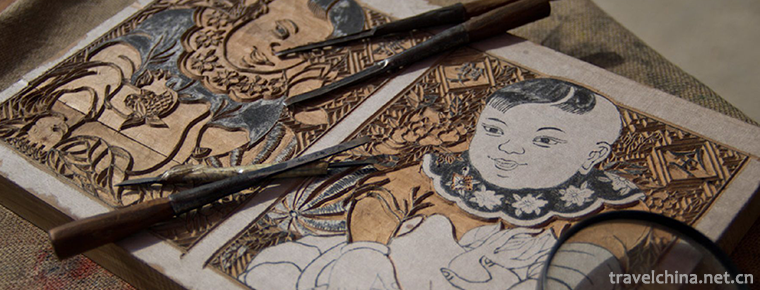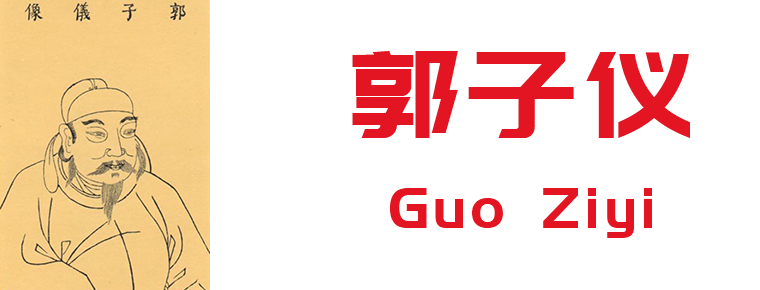Shuixiang Opera
Shuixiang Opera
Shuixiang opera is a traditional folk cultural activity in Shaoxing, Zhejiang Province. Waterfront theatres are mostly built on rivers in front of temples such as land temples, so they are called "Hetai" and "Wanniantai". The ancient stage in Dongan, Renjiaqiao, Fengyi, Dongzhou and Binshe still exist.
The origin of social drama can be traced back to sacrificial songs and dances in ancient times. It is a kind of folk custom activity with the nature of rewarding gods and sacrificing ghosts. After numerous accumulation and integration of various forms of artistic performance, it completed the combination of sacrificial activities and opera performances in the Song and Yuan Dynasties, and formed a unified form of "society, sacrifice and drama". With the prosperity of opera, in the Yuan and Ming Dynasties, folk opera activities were extremely prosperous. Especially in the Spring and Autumn Papers, Festival celebrations, Yingshen Competition and other days, the masses of villages and towns gathered, the theatre was full of gongs and drums, and the sky was very lively. In Ming Dynasty Zhang Dai's Dream of Tao'an, there is a record of the night performance of Simudian Temple in Taoyan. In the Qing Dynasty, Tong Qianmeng wrote a poem of bamboo branches, describing the grand occasion of watching the opera at that time: "Yue Shen competed against Du Shen, performed the new Hetai opera, and Meng Yuguan, a lantern on both sides of the Taiwan Strait, saw people in the water."
The performances of social drama have formed the most regional folk activities because of the perfect combination with Shaoxing's unique water environment.
On June 7, 2008, Shuixiang social drama was approved by the State Council to be included in the second batch of national intangible cultural heritage list.
historical origin
The origin of social drama can be traced back to sacrificial songs and dances in ancient times. It is a kind of folk activities with the nature of rewarding gods and sacrificing ghosts. The history of Shaoxing opera can be traced back to a long time ago, and it was very popular in the Southern Song Dynasty. After a long historical process and numerous accumulation and amalgamation of various forms of artistic performances, Shaoxing's social drama was closely integrated with opera in the Song and Yuan Dynasties, formally integrating sacrificial activities and opera performances into an integral whole, forming a process of integration and integration of "society-sacrifice-drama".
The social drama is performed for the sacrificial society. Shaoxing used to offer sacrifices to the society every spring and autumn. The Spring Festival is called "Spring Society" and the Autumn Festival is called "Autumn Society". The day of sacrificial service is called "community day". Social operas are usually performed in temple terraces, grass terraces, River terraces, Street terraces and other places. Platform is called Temple Terrace when it is built in ancestral temple; straw terrace when it is built at an intersection or in an open place; river terrace when it is built on the Bank of a river; Street terrace when it is built on the street. The prosperity of social drama has made Shaoxing an ancient stage.
Shaoxing, Zhejiang Province, has numerous rivers and lakes. It is known as the "Water Village Zeguo" at home and abroad, which provides a good environment and abundant soil for the nurturing, growth and development of Shuixiang social drama.
Lu Xun's grandmother Huangfuzhuang village is facing the river in front of Baogong Hall, three facing the river and one facing the bank. At that time, people shook various boats, gathered in front of the stage, there are also sitting on the boat to watch the theatre, not interesting. In the autumn of the 19th year of Guangxu in the Qing Dynasty (1893), Lu Xun, a young man, once took refuge in Huangfuzhuang because of the case of his grandfather Zhou Fuqing Kechang. He often watched Hetai opera with his children in the village. His article "Social Opera" has a very wonderful description of this stage. However, many social plays have long disappeared, and the horror and excitement of "Men's Hanging", "Women's Hanging", "Jumping Uncertainty" have long been sealed in the dust of history. Only those stages scattered in temples, hills, riversides and under bridges are still full of poetic and picturesque sentiments, and people can daydream for thousands of miles.
Lu Xun said in The Social Opera that foreigners thought that Chinese opera was not suitable for theatrical performance because of its "big knock, shout and jump", but if it was performed in the field, "from a distance", it would "have its own style". Dragon and Tiger Fighting and Tour Garden Hanging and Fighting are very good operas that can reflect the characteristics of Shaoxing Opera. They have always been applauded by Shaoxing audiences. Lu Xun wrote these two plays into such famous novels as Ah Q Zheng Zhuan and She Xi, which are not his works, but fully reflect their popularity. Even his name can't be written, and even Ah Q, who can't draw a circle, even hummed a few words "beating you with a steel whip" when he was walking down the street before he was sentenced to death, suggesting that the social drama has been widely welcomed by the people of Shaoxing. Lu Xun recounts the beautiful memories of the children and adolescents watching the social drama with his beautiful Lyric style. It is a fascinating School of poetry and painting, which arouses people's attachment and nostalgia for the social drama.
Luxun, a literary hero, has never forgotten the native opera he saw in his childhood and praised it to the utmost. Lu Xun has successively written novels such as Social Opera, prose "Impermanence" and essays such as "Female Hanging", which have touching descriptions and incisive expositions of Social Opera. Throughout the ages, I wonder how many literati have written poems chanting and describing social drama.
Traditional drama
The social drama is divided into three parts: the colourful head play, the prominent head play and the big play. The lottery opera, also known as "oral lottery opera", is mainly a lucky drama for the rich and Jinguan officials. Protruding drama, locally known as "bone destruction", is a drama that paves the way for the main drama. The plot of his plays is tortuous and artistic, and he has made great efforts in singing, doing, reading and playing. Famous dramas include Dragon and Tiger Fighting, Biography of Britain and Double Dragon Club. Colourful and prominent performances are usually performed during the day. Shaoxing is known as the "Ping'an Opera", which began to perform in the evening. Famous operas such as "Eye Lotus Opera" were performed in accordance with the development of the plot.
The social drama is dominated by traditional Yueju opera, as well as Shaoxing lotus flower falls, Tuban and so on, with strong local characteristics. Shao Opera originally had many literary plays, but in order to cater to the audience's lively psychology, many juggling and fighting scenes were added to lengthen the plot. Ping'an Opera is also a popular play in Shaoxing, which has been praised by Mr. Lu Xun many times. Some of the roles in the novel are spoken in Shaoxing dialect. For example, Shaoxing pronunciation of "what" pronounces "SO", "eat down", "I'll take a piece" means "mine"... Shaoxing pronunciation is full rhyme, all pronounced intonation. This makes reading funny and humorous, which will make the audience laugh.
Shaoxing Shuixiang Opera contains people's pious beliefs, places people's good wishes and has strong regional characteristics. Shaoxing Opera "Dragon and Tiger Fighting", "Liang Zhu Hui 18", Shaoxing Parrot Opera "Buying Green Carbon and Chao Feng Seeing White Peony", Xinchang Tune "Xixiang Ji You Temple", Zhuji Xilu Muffled Bullet "Dumb Back Mad" and Shaoxing Mulian Opera "Zhang Man Dad" 》 Traditional opera performances such as "Men's Hanging" won applause from the audience. In addition, there are "Wang Po scolds chickens", "Woman Hang", "Men Hang", "Zhang Man Da Da", "Chang Chang", "Dumb Back Crazy", "Luyou Mountain" and so on.
folk culture
In social theatre performances, Shaoxing people also have a habit of inviting their relatives and friends to the theatre. In the past, the rural areas rarely had the opportunity to see the theatre, so when it comes to acting clubs, they often send invitations to relatives and friends. When relatives and friends arrived, every household had to kill chickens and geese, and do their best to operate them. This custom has also continued to this day. Social drama has become a folk activity in Shaoxing after the Spring Festival.
Shaoxing Shuixiang Opera is a national intangible cultural heritage protection list project, is the unique cultural space and living customs of Shaoxing Shuixiang. In order to celebrate the 7th Cultural Heritage Day in 2012 and publicize the protection achievements of Shaoxing Non-Heritage Project, a photographic competition of Shaoxing Water Village Society Opera was held. The competition is sponsored by Zhejiang Photography Art Society, Shaoxing Cultural Radio and Television Press and Publishing Bureau, Shaoxing intangible cultural heritage protection center and Shaoxing Photographers Association. Photo enthusiasts gathered around the stage of Mataishou Temple in downtown area, surrounded by the waterfront stage of Lu Xun's hometown, and used camera language to shoot Shaoxing local theatre performed by Zhongyan Temple stage, Mataishou Temple stage, City Plaza stage, Ancun stage (heritage base), Keyan scenic spot stage (heritage base) and Lu Xun's hometown stage (heritage base).
Inheritance and Protection
Inherit
As time goes by, Shuixiang opera is inheriting and developing. Nowadays, Shaoxing opera is the main form of Shuixiang opera written by Lu Xun. It reproduces the folk customs and characteristics of Shaoxing opera, Watching opera and Vietnamese opera. It combines primitive opera style with modern performing art organically, and will surely win the applause of numerous audiences.
During the seventh China Cultural Heritage Day in 2012, Shaoxing Shuixiang opera folk activities were held in Zhongyan Temple stage, Matai Shoumiao stage, City Square stage, Ancun stage, Keyan Lu Town stage and Lu Xun's hometown stage. Shaoxing Opera, Yueju Opera, Shaoxing Parrot Opera, Shaoxing Mulian Opera, Zhuji Xilu Ran Tan, Xinchang Tune and other traditional operas with Shaoxing regional characteristics are performed in turn in these six stages. The wonderful performances are welcomed and sought after by the public.
As a folk activity, the inheritance of social drama is group. People around Shaoxing have taken social drama as a part of their lives, consciously inherited it from generation to generation, actively participated in it, or organized and planned it, or widely publicized it, or participated in and watched it personally. It can be said that everyone is a descendant. Shaoxing villages and towns often invite Zhejiang Shaoxing Opera Troupe, Shaoxing Xiaobaihua Yue Opera Troupe, as well as professional and folk opera troupes in various counties to perform community operas on major festivals or special occasions. Taking Shengzhou, the birthplace of Yueju Opera, as an example, there are dozens of professional folk opera troupes in this county. They are still active in Shaoxing's towns and villages. Their income from performing social operas is the main economic source, and their performances greatly enrich and activate the cultural life of the countryside.
protect
With the further development of intangible cultural heritage protection, Shaoxing City has carried out the following series of protection work on "Shuixiang Society Opera", and achieved initial results:
1. Conducting a census of social theatre stage and grasping resources
From 2006 to 2007, Shaoxing Cultural Museum organized photographic cadres to travel to 118 townships in the whole city and photographed more than 200 ancient stages. They mastered the history, materials, structure and shape of these ancient stages.
2. Establishment of inheritance base and normalization of social drama performance
In 2008, Shuixiang social drama was listed in the second batch of national intangible cultural heritage list. In order to further improve the inheritance and protection of Shuixiang social drama, Shaoxing Municipal Bureau of Culture and Broadcasting established three exhibition inheritance bases, namely, Keyan Scenic Spot, Lu Xun's hometown and Dongan Village, Mashan Town, and carried out corresponding protection work to normalize the performance of social drama.
3. Organizing expert discussions to clarify protection ideas
In November 2011, an expert seminar on Shuixiang social drama was held in Shaoxing Non-Heritage Center. Tong Shaoshu, Chairman of Zhejiang Folklore Culture Promotion Association, Wang Zhao, Director of Non-Heritage Department of Zhejiang Culture Department, Xu Hongtu, member of Zhejiang Non-material Cultural Heritage Protection Expert Committee, and Ren Guiquan, Qiu Shixiong, Yang Naijun, Zhang Guanda, Shaoxing Opera Performing Artist Wang Zhenfang and other provincial and municipal experts attended the meeting to discuss how to do a good job of water under the new situation. Articles on the inheritance, protection and development of township opera.
4. Establishing special exhibition halls to disseminate the knowledge of social drama
At the end of 2011, Shaoxing intangible cultural heritage protection center set up a special exhibition hall of Shuixiang social drama in Dongan Village, Mashan Town, which was open to the public free of charge. The exhibition hall is presented in many forms, such as text, audio-visual, pictures, etc. Through the combination of pictures and texts, the historical origin, performance program, performance content and inheritance of the social drama are introduced in depth and shallowly, so that the visitors have a more intuitive understanding and understanding of Shaoxing's water village social drama.
5. Organizing large-scale exhibitions and live photographic competitions to expand the influence of social drama
In order to fully display the style of Shuixiang opera and expand its influence, Shaoxing Municipal Bureau of Culture and Broadcasting has organized large-scale exhibitions with the theme of "Watching the Millennium opera of Shuixiang" for several consecutive years.
In November 2011, the Shuixiang Society Opera Exhibition was held in Dongan Village, Mashan Town, a heritage base. More than 1000 spectators watched the performance in the drizzle and savored Lu Xun's paintings of the opera style of Shuixiang Society.
In June 2012, the performance took Zhongyan Temple stage as the main venue, Matai Shoumiao stage, City Square stage, Dongan Village stage in Mashan Town, Luzhen stage in Keyan Scenic Area and Luxun's hometown stage as the sub-venues. The wonderful performance was widely welcomed and sought after by the masses.
In 2013, as one of the "beautiful Shaoxing in the last ten years" series activities, the large-scale exhibition of Shuixiang social drama took Zhongyan Temple stage as the main venue on September 26, and took the Dongan Village stage in Mashan Town, the stage in Lu Xun's hometown and the stage in Keyan Scenic Area as the sub-venues to organize social drama performances.
In 2013, Shuixiang Opera was rated as one of the eight non-heritage brand activities in Shaoxing City.
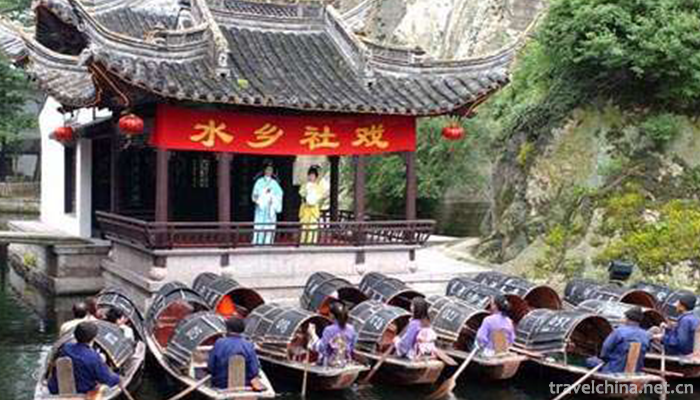
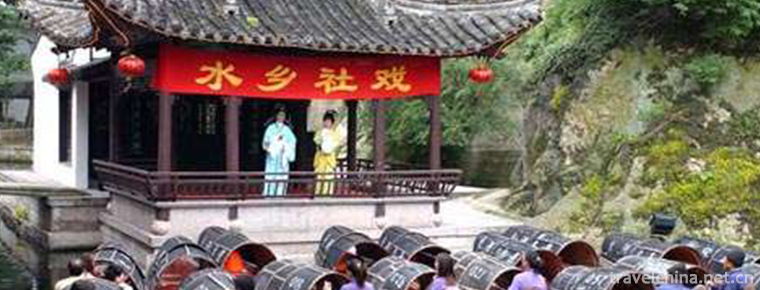
Shuixiang Opera
-
Wudang Mountains Scenic Area
Wudang Mountain, the holy place of Taoism in China, is also known as Taihe Mountain, Xieluo Mountain, Shenshan Mountain and Xianshi Mountain. It has been called "Taiyue", "Xuanyue"
Views: 196 Time 2018-12-12 -
Jiulian mountain
Jiulianshan Scenic Spot is located in Songshuping Village, Shangbali Town, Huixian City, Xinxiang City, Henan Province. It belongs to the south foot of Taihang Mountain
Views: 201 Time 2018-12-22 -
Hani terrace Yuanyang terrace
Yuanyang Terrace, located in the south of Ailaoshan Mountain in Yuanyang County, Yunnan Province, is a masterpiece left by the Hani people from generation to generation. Yuanyang terrace is the core a
Views: 189 Time 2019-01-13 -
Wild Elephant Valley in Xishuangbanna
The Wild Elephant Valley in Xishuangbanna is located in Mengzi Nature Reserve and "UNESCO Man and Biosphere Reserve" of Xishuangbanna National Nature Reserve
Views: 155 Time 2019-02-25 -
Korean Dongxiao Music
The Koguryo History Music Records records that Dongxiao belonged to the musical instruments of the Tang Dynasty in China. During the period of Shizong in the Li Dynasty
Views: 141 Time 2019-04-16 -
Hanchuan good books
Hanchuan Shanshu is a kind of traditional folk music which combines rap and singing in Hubei Province. Since the Qianlong period of the Qing Dynasty, it has a history of 260 years.
Views: 144 Time 2019-05-02 -
Traditional cooking techniques of Liao cuisine
In April 2016, "Liao cuisine traditional cooking skills" was approved by the State Council as a national intangible cultural heritage, Liao cuisine became the first major cuisine department
Views: 207 Time 2019-05-13 -
Xingshan Folk Song
On May 20, 2006, Xingshan Folk Song was approved by the State Council to be included in the first batch of national intangible cultural heritage list.
Views: 178 Time 2019-07-08 -
Yang Liu Qingmu New Year Print
Yangliuqing Wood Printing New Year Picture, Tianjin folk traditional art, one of the national intangible cultural heritage.
Views: 236 Time 2019-07-11 -
Peking Union Medical College
The Chinese Academy of Medical Sciences was established in 1956. Peking Union Medical College was founded in 1917. Since 1957, the Chinese Academy of Medical Sciences and Peking Union Medical College
Views: 240 Time 2019-09-06 -
Guo Ziyi
Guo Ziyi (697 - 781 years), Zi Zi Yi, Iowa Zheng county (now Shaanxi) Weinan city Hua Zhou District ) People. The famous Tang Dynasty Politician , Militarist
Views: 266 Time 2019-09-07 -
Suining transportation
Suining is a transportation hub city in Sichuan Province, with an equal distance of 128 km between Suining and Chengdu Chongqing. It is an important node city and secondary comprehensive transportation hub between Chengdu and Chongqing. 237km "3-way 7-line" railway
Views: 143 Time 2020-12-16
